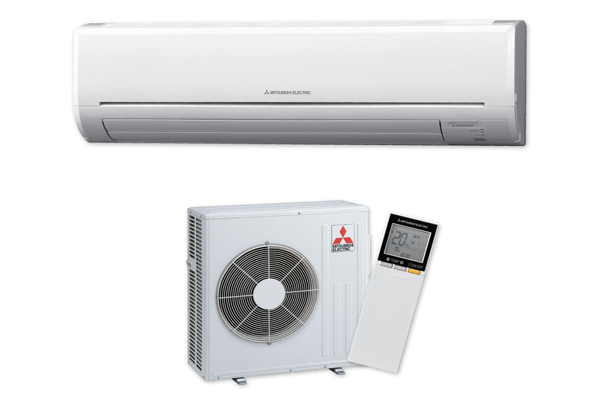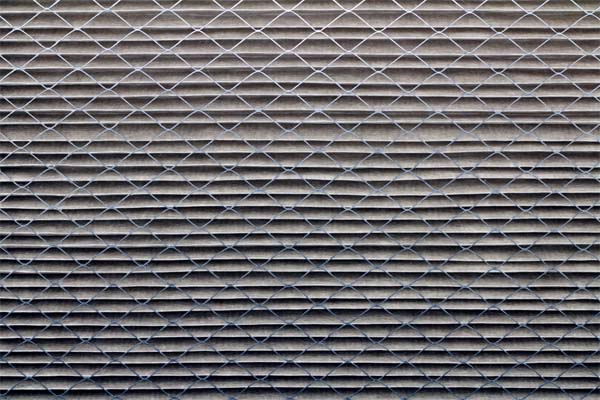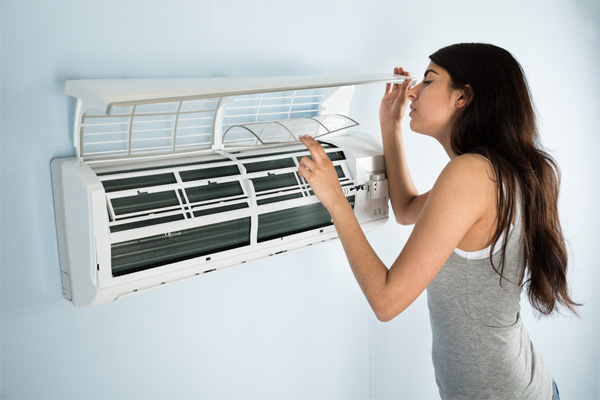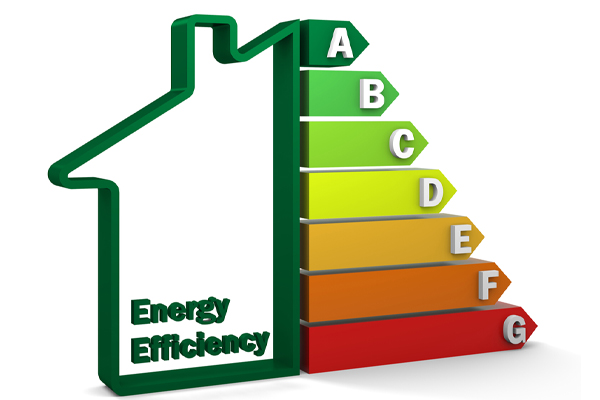 The combination of warm temperatures and the health risks of pollution have made indoor air quality a major concern for people. For many people, living and working inside a building is the norm. Thanks to cooling and heating systems, living spaces are kept comfortable throughout the day. Unfortunately, many people ignore the importance of having good indoor air quality.
The combination of warm temperatures and the health risks of pollution have made indoor air quality a major concern for people. For many people, living and working inside a building is the norm. Thanks to cooling and heating systems, living spaces are kept comfortable throughout the day. Unfortunately, many people ignore the importance of having good indoor air quality.
Very often, they simply rely on their HVAC systems to keep the air safe indoors. Surprisingly, many buildings have poor indoor air quality. In fact, the air indoor may even be more polluted than the air outdoors. So how do you fix this? Could a ductless mini-split system be the answer?
Understanding The Ductless Mini-Split & Indoor Air Quality
Table of Contents
A ductless mini-split system is similar to a central air conditioner with one exception: the ductless system lacks ductwork that is common with forced-air cooling systems. Ductless systems are made up of two components – the indoor and the outdoor units.
The indoor unit is installed in the building. It works by sucking warm air from an enclosed space and passing it to the evaporator coils. The evaporator coils are an important part of the cooling system. Inside these hollow coils runs the coolant or refrigerant, which serves to absorb the heat from the air. The coolant also cools the air that is then released indoors to keep the room cool. The warm air from the room is released outdoors, so what is left indoors is cool comfortable air. This is why air coming from the outdoor component of the ductless HVAC system is warm.
A regular AC system has a system of ducts that are used to bring air from a room to another component of the HVAC system. The air is then cooled and pushed through the ducts to be released into the room. This air is now conditioned and cool.
A ductless system, however, does not require ductwork. The indoor unit in a ductless AC system is installed indoors and does not require a connection to ducts to produce cool air. The indoor unit in a ductless system is the component that cools and distributes the air indoors.
Uses Of A Ductless Mini-Split System
 Ductless mini-splits can be used for many applications, including residential, industrial, and commercial uses. These systems are installed in homes, businesses, factories, and manufacturing plants. Ductless systems offer flexibility that traditional AC systems cannot. For example, ductless air conditioners can provide efficient cooling for single rooms or multiple rooms, and they can also cool retrofitted rooms and additional spaces. Ductless systems are also quite effective in keeping enclosed patios and garages comfortable.
Ductless mini-splits can be used for many applications, including residential, industrial, and commercial uses. These systems are installed in homes, businesses, factories, and manufacturing plants. Ductless systems offer flexibility that traditional AC systems cannot. For example, ductless air conditioners can provide efficient cooling for single rooms or multiple rooms, and they can also cool retrofitted rooms and additional spaces. Ductless systems are also quite effective in keeping enclosed patios and garages comfortable.
Another key advantage of ductless systems is that they can be used in structures where the installation of distribution ductwork or the extension of existing ductwork is not possible. Apartments and multiple-family homes, for example, are good candidates for ductless systems. Since ductless systems allow zoning, they are the preferred heating and cooling option for multiple rooms in the same building where occupants have different cooling and heating needs.
With ductless systems, it is possible to set the temperature in each room at a different level. For example, the temperature in one bedroom may be kept at a lower setting than another bedroom. It is also possible to keep the temperature lower in the kitchen area and keep the temperature higher in bedrooms and family rooms. You can shut the indoor unit off when a room is unoccupied, saving energy in the process. Ductless systems come with air handlers for each space, which makes temperature adjustment easy.
In terms of keeping air quality indoors safe and clean, ductless mini-splits are quite effective. With high-quality air filters in place, these systems can ensure less dust, pollen, and other particulates.
Why You Should Be Concerned About Indoor Air Quality
Indoor air quality is the condition of the air inside a structure or building that helps promote comfort, health, and safety to the occupants of that structure. Also called IAQ, indoor air quality is a necessary component of the design of a building. Most modern buildings are designed to be closed to protect indoor space from pollutants outdoors. Outdoor air is often too warm or too cold and may carry particulates like dust, dirt, smoke, smog, and microorganisms.
Ensuring indoor air quality is necessary to prevent any potential health issues. Common air pollutants like dust, pollen, smoke particles, dirt, and fungi, for example, could be inhaled and cause health issues. Some of these particulates can even cause damage to electronic gadgets. If dust builds up indoors, for example, it may not only cause respiratory problems, too much dust can also interfere with the proper functioning of appliances and electronic equipment.
Problems with indoor air quality do not always manifest themselves immediately. Some ill effects on health could show up after some time has already passed. Some health issues can even worsen over time, especially with continued exposure to the same polluted indoor air. Excellent indoor air quality promotes comfort and ensures the well-being of people living and working inside a building. With an HVAC system that is well-designed and correctly installed, healthy indoor air can be enjoyed.
Can HVAC Systems Improve Air Quality Indoors?
There is no question about the impact of the quality of indoor air on the quality of life. Therefore, it is only natural that measures are implemented to prevent or at least, minimize the adverse effects of indoor air pollution.
The HVAC system is easily the most convenient and effective tool to help control indoor air pollution. HVAC systems are equipped with air filters that effectively prevent particulates from contaminating indoor air.
The efficacy of the HVAC system in maintaining indoor air quality is even increased when it works in tandem with a dehumidifier. A dehumidifier lowers the amount of moisture indoors, which helps maintain a safer living space for people who have health issues such as allergies, asthma, and respiratory diseases. An HVAC system does not only keep the air at a comfortable temperature, but it can also help keep humidity low. This ensures that the environment is not conducive to fungi, mold, mildew, and a host of other harmful microorganisms.
How Indoor Air Quality Affects Your Health
The American College of Allergy, Asthma, and Immunology states that 50% of illnesses can be traced to low-quality indoor air. This, in turn, has an indirect effect on businesses. When workers are sick, they miss work and have to receive medical care. According to the U.S. Dept. of Energy, businesses could lose over $160 billion every year because of worker absences and medical care payments. When indoor air quality is maintained, people can live and work in an environment that is not only comfortable but also safe.
Why You Should Be Wary Of Ducted HVAC Systems
 Ducted systems have been around for many years and have worked decently in cooling and heating indoor environments. However, the design of the system itself leaves it open to certain vulnerabilities, such as:
Ducted systems have been around for many years and have worked decently in cooling and heating indoor environments. However, the design of the system itself leaves it open to certain vulnerabilities, such as:
1. Allowing the circulation and distribution of pollutants through the ductwork
Conditioned air is distributed through the ducts. If pollutants and contaminants are present in the ducts due to poor maintenance, neglect, leaks, or improper installation, these pollutants can be carried through the conditioned air and distributed indoors.
2. Accumulation of dust, dirt, pollen, and other allergens in the duct system
Ducts tend to collect tiny particles. Even with regular cleaning and air filters in place, not all particles are captured. These particles accumulate and build up. Eventually, they are released with the conditioned air and mix with indoor air that is inhaled by people occupying the room.
3. Failure of home and business owners to maintain HVAC systems
Ducted systems are often neglected because ducts are kept out of sight. As such, they are easy to neglect and often do not receive regular maintenance until they become contaminated.
Are Ductless Systems The Answer To Indoor Air Issues?
 Ductless systems work remarkably well in conditioning air without the need for ductwork. Any problems that a ductwork system carries is thus eliminated. Some of the most important benefits of ductless systems are:
Ductless systems work remarkably well in conditioning air without the need for ductwork. Any problems that a ductwork system carries is thus eliminated. Some of the most important benefits of ductless systems are:
1. Eliminating contaminants carried from ducts
Ductless mini-split systems force air directly into a room, which means that air does not have to go through ducts. Not only is maintenance a breeze, but problems of contamination that ducted systems often have are also eliminated.
2. Improving indoor air quality
According to several studies, the air indoors may be worse than the air outdoors. This is particularly true in enclosed spaces, particularly those that use conditioned air from regular HVAC systems. Ductless mini-split systems do not need ducts to distribute air, which helps eliminate the problem of contaminated air indoors. Ductless systems are not likely to collect pollutants and circulate them indoors, ensuring that indoor air quality remains safe.
A common problem that occurs in ducted systems is that ducts could become separated, broken, or damaged. When there is a crack or gap in the ducts, conditioned air will leak, costing more in terms of energy consumption. A break in the ducts also leaves the system vulnerable to contamination by pollutants.
3. Increased efficiency
 The efficiency of HVAC appliances is gauged by the SEER or HSPF. If an appliance is given a higher rating, it means that it uses less energy to generate the same amount of cooling and heating as an appliance with a lower SEER/HSPF rating. Ductless mini-split systems are often rated with a higher SEER AND HSPF ratings due to their efficiency. Because they are designed to distribute conditioned air directly, they do not use up more energy than necessary.
The efficiency of HVAC appliances is gauged by the SEER or HSPF. If an appliance is given a higher rating, it means that it uses less energy to generate the same amount of cooling and heating as an appliance with a lower SEER/HSPF rating. Ductless mini-split systems are often rated with a higher SEER AND HSPF ratings due to their efficiency. Because they are designed to distribute conditioned air directly, they do not use up more energy than necessary.
Ductless systems also feature excellent air filters that collect contaminants far more efficiently. Additionally, they also have motors that can be set up to adjust automatically to the preferred temperature.
4. Flexibility
Air handlers in a ductless system may be installed on a wall or the ceiling. They may even be installed above the floor if so required. With this type of flexibility, the placement of the air handlers may be designed to promote optimum airflow, accessibility, and efficiency. This also makes it easier to check, clean, and maintain.
Conclusion: Should You Choose A Mini-Split System?
The ductless mini-split is easily the best option for homes and offices that are concerned with the following:
- Limited space, such as in homes and buildings that cannot accommodate ductwork
- Enclosed spaces that require space and room heaters
- Small spaces that still require heating and cooling
- Multiple enclosed areas that have different heating and cooling needs
- Energy-Efficient heating and cooling solution for central HVAC systems
- Newly-added rooms
These concerns are fairly common to many structures and it is good to know that the ductless mini-split system is the best option that will meet the requirements of all of these issues. Ductless systems can be installed in small and enclosed spaces such as garages and patios, multiple rooms, and structures that do not have plenty of space for the installation of ductwork. If you want to know more about the ductless mini-split system and how it can address your heating and cooling needs, make sure to obtain the right information. Call your HVAC contractor today and find out how ductless systems can help you enjoy better indoor air quality.
Call Skylands Energy Service For All Your Home Comfort Needs
You have the option now to choose the best HVAC system to ensure healthy indoor air, low energy costs, home comfort, and safety.
If you are ready to switch to a ductless system or have more questions, call Skylands Energy Service right away. Our NATE-certified technicians will discuss your needs and requirements to help you understand the best HVAC system for you.
We offer a range of services from heating and cooling installations, repairs, and tune-ups. We also offer an in-home estimate free of charge. Call Skylands Energy Service today.
Contact us now at (908) 707-1776 to find out more!

